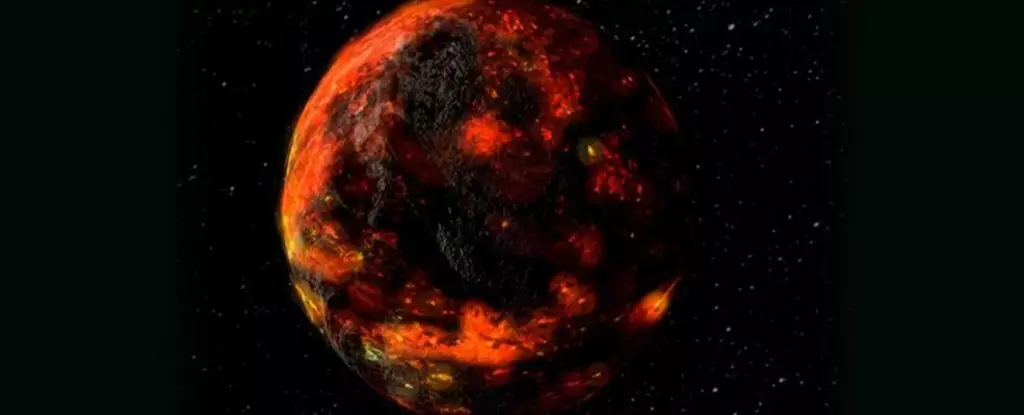The Moon, Earth’s enduring satellite, holds many secrets about its formation and early history. As scientists make advancements in observational techniques and analytical methods, new insights emerge to help us better understand our celestial neighbor. The latest findings, particularly from rock samples gathered during the Apollo missions, indicate that the Moon solidified at about 4.43 billion years ago, correlating closely with a period when Earth began its journey toward becoming a habitable planet. This article explores the significant research conducted by scientists at the University of Chicago, led by Nicolas Dauphas, and the implications it carries for our understanding of the Moon’s formative years.
Current theories suggest that the Moon formed following a colossal impact between a Mars-sized body, named Theia, and early Earth approximately 60 million years after the Solar System’s inception around 4.6 billion years ago. This catastrophic collision sent debris into orbit around the Earth, which gradually coalesced to form the Moon. Initially, this newborn Moon was a molten sphere—a state of being that would undergo significant changes as it cooled and solidified.
As the Moon cooled, it started to crystallize, sorting itself into distinct layers. The majority of the lunar surface was once a magma ocean, which eventually crystallized, leaving behind a unique residual liquid known as KREEP—enriched with potassium, rare earth elements, and phosphorus. This composition not only provides a timeline for lunar history but also insights into the processes governing planetary formation in the early Solar System.
Researchers conducted detailed analyses of lunar rocks to uncover the secrets held within the KREEP reservoirs. This study is critical because KREEP is believed to have formed approximately 140 million years after the birth of the Solar System. By examining the ratios of radioactive elements such as lutetium, which decays into hafnium over time, scientists began piecing together the timeline for KREEP’s formation. Interestingly, the amount of lutetium present in lunar samples was notably lower than in comparable bodies formed during the same epoch, which posed an intriguing question: What does this tell us about the Moon’s geological history?
The researchers focused on measuring these element ratios within the embedded lunar zircons contained in the Moon rocks. Their findings suggest that KREEP-rich reservoirs likely emerged in a defined timeframe, correlating well with the established chronology of the Solar System’s evolution. This meticulous examination provides not just a timeline but also a broader understanding of the processes that shaped the Moon’s surface post-collision.
As the Moon’s surface transitioned from molten to solid, it endured a barrage of impacts from leftover planetary debris. These impacts were not mere coincidences but part of a prolonged period known as the Late Heavy Bombardment, during which many celestial bodies, including Earth, experienced significant collisions. The research indicates that these impacts played a crucial role in shaping the lunar surface and contributed to the formation of volcanic features, including the vast mare basalts resulting from regenerated lava flows.
These flows occurred due to the intense heat generated from continuous impacts, which allowed lava to seep into large impact basins and reshape the Moon’s topography. Understanding this step not only sheds light on lunar geology but paradoxically offers insights into Earth’s early formative processes, as the environments that developed on both bodies were inextricably linked.
The excitement surrounding these findings is heightened by the prospect of upcoming lunar missions, such as Artemis and China’s Chang’e program. Researchers are hopeful that additional rock samples from prominent regions like the South Pole-Aitken basin will further refine the timeline and detail the processes involved in lunar development. Analyzing these samples may reveal further evidence of KREEP’s distribution and clarify the cooling history of the Moon, enriching our understanding of how planetary bodies evolve in the Solar System.
The importance of these studies transcends lunar geology; they bridge our understanding of Earth’s own evolution. The singular event leading to the Moon’s formation perhaps marked the cessation of major impacts on Earth, setting the stage for a more stable environment conducive to life. Hence, uncovering the Moon’s history not only illuminates the past but serves as a crucial reminder of how interconnected the celestial bodies within our Solar System truly are.
As scientists continue to unravel the complex history of the Moon, the implications for both lunar and terrestrial evolution grow ever clearer. The intricate analysis of lunar samples reveals not just the history of a rock but also the foundational story of Earth itself. With every discovery, we are reminded of the intricate interplay between cosmic forces, geological processes, and the delicate balance that has allowed life to flourish on our home planet. The journey of exploration will undoubtedly expand as our understanding deepens, revealing further secrets of the Moon and what it can teach us about our place in the cosmos.


Leave a Reply